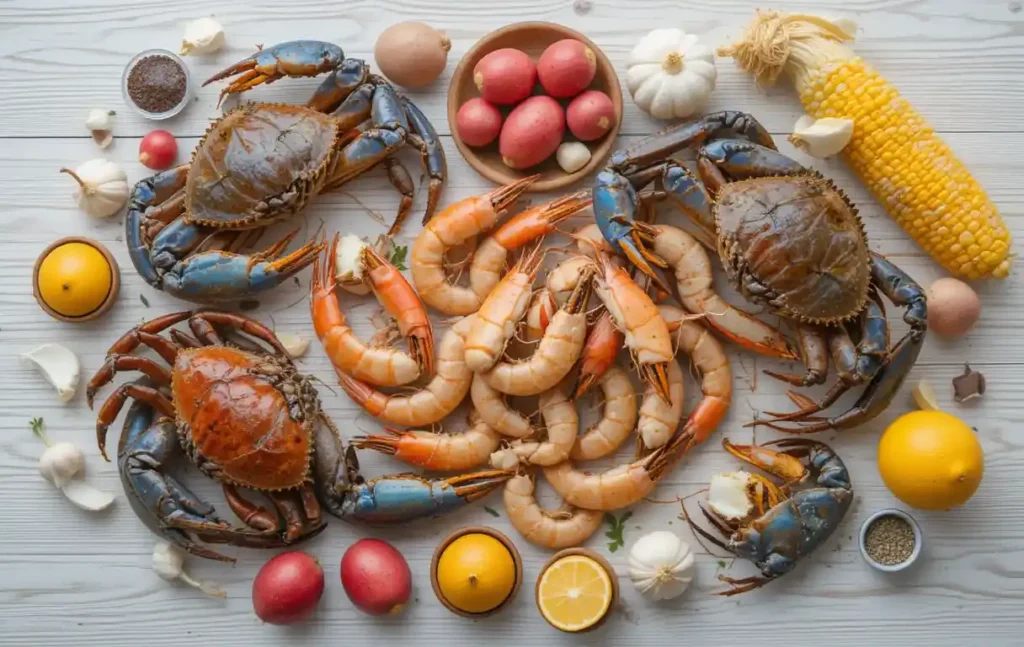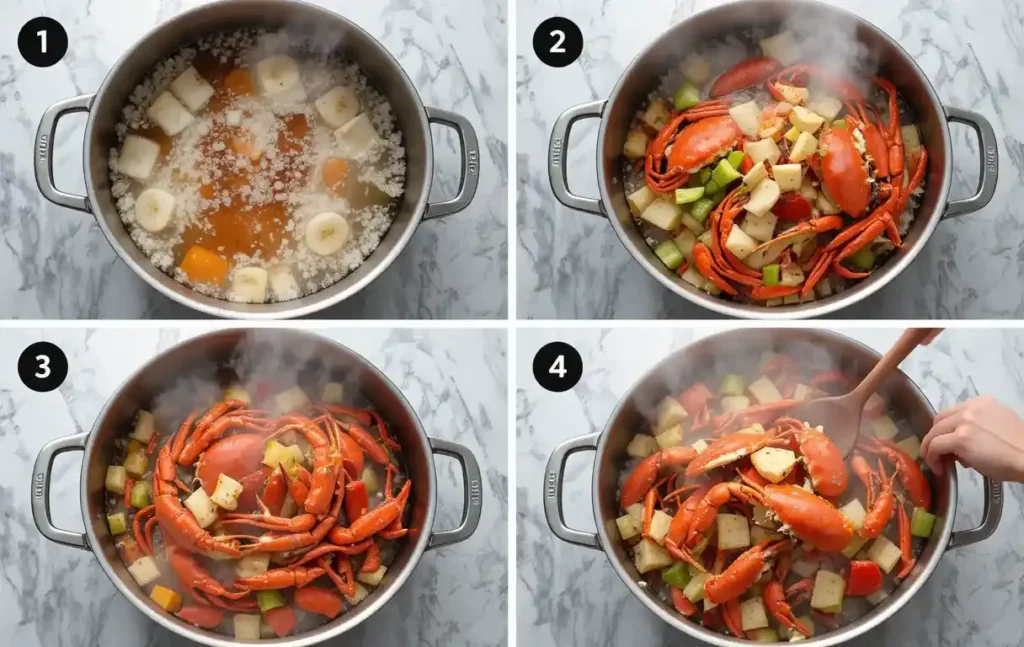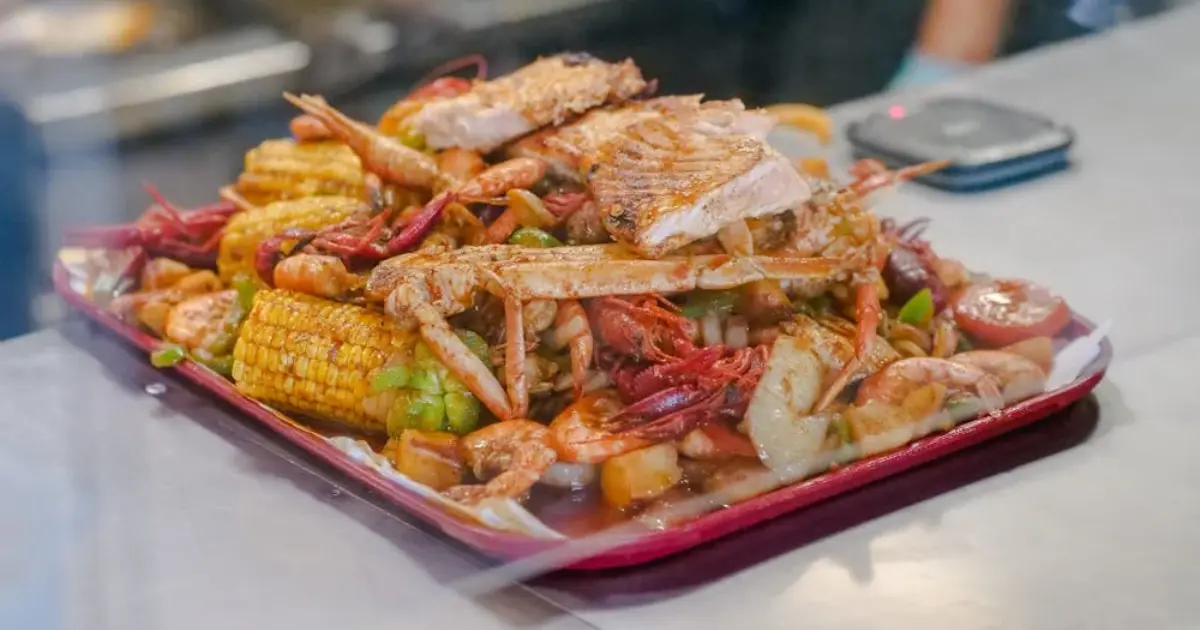Imagine the scene: Steam rises from a massive pot, carrying the intoxicating aroma of seafood and spices through your kitchen. The anticipation builds as your guests gather around, drawn by the promise of a feast that’s both casual and magnificent. Creating the perfect crab boil isn’t just about cooking—it’s about orchestrating an experience that transforms an ordinary evening into an unforgettable celebration of flavor, friendship, and tradition.
Table of Contents
Understanding the Art of Crab Boiling: A Cultural Journey
Before diving into the technical aspects, let’s appreciate why crab boils have become such a beloved culinary tradition. Originating from the coastal regions of the American South, particularly Louisiana and Maryland, crab boils represent more than just a cooking method—they’re a celebration of community, seasonal abundance, and the simple pleasure of sharing good food with great company.
Regional Variations That Make Each Boil Special
Different coastal regions have developed their unique approaches to the perfect crab boil:
- Louisiana Style
- Heavy emphasis on Cajun seasoning
- Often includes crawfish when in season
- Typically spicier than other variations
- Maryland Style
- Old Bay seasoning dominates the flavor profile
- Blue crabs are the star ingredient
- More subtle spicing with emphasis on seafood taste
- Low Country Boil
- Includes smoked sausage
- Lighter on spice
- Heavy on vegetables and corn
Essential Equipment: Building Your Crab Boil Arsenal
Primary Equipment
Your success begins with having the right tools at hand. Here’s everything you’ll need, along with specific recommendations for each item:
- Large Stockpot (12-20 quart minimum)
- Look for heavy-bottom construction
- Consider aluminum for better heat distribution
- Must have a tight-fitting lid
- Recommended depth: at least 12 inches
- Strainer Basket or Mesh Bag
- Stainless steel construction preferred
- Must fit comfortably inside your pot
- Strong handles for easy lifting
- Large enough holes for proper water circulation
- Long-handled Utensils
- Stainless steel spoon for stirring
- Spider strainer for removing individual items
- Tongs with good grip
- Heat-resistant up to 400°F
Secondary but Essential Tools
- Seafood Crackers and Picks
- One set per two people
- Durable stainless steel construction
- Ergonomic handles for comfort
- Easy to clean and sanitize
- Serving Equipment
- Large, shallow serving trays
- Individual bowls for shell disposal
- Butter warmers
- Seafood forks
Table Setting Necessities
- Newspaper or butcher paper (3-4 layers thick)
- Paper towels in abundance
- Wet wipes for cleaning hands
- Disposable bibs for guests
The Heart of Your Crab Boil: Comprehensive Ingredient Guide

Premium Seafood Selection
Primary Seafood Components
| Ingredient | Amount | Selection Tips | Quality Indicators |
|---|---|---|---|
| Live blue crabs | 12-15 crabs | Select active specimens | Should be moving vigorously |
| Large shrimp | 2 pounds | 16-20 count per pound | Firm shells, no black spots |
| Crawfish (seasonal) | 3 pounds | Look for active ones | Bright red shells |
| Clams | 2 pounds | Tightly closed shells | Should close when tapped |
Optional Seafood Add-ins
| Ingredient | Amount | Best Season | Cooking Time |
|---|---|---|---|
| Mussels | 2 pounds | September-April | 3-4 minutes |
| Lobster tails | 4-6 pieces | Year-round | 5-7 minutes |
| King crab legs | 2-3 clusters | October-January | 4-5 minutes |
Fresh Produce Selection
Essential Vegetables
| Ingredient | Amount | Selection Tips | Prep Notes |
|---|---|---|---|
| Red potatoes | 2 pounds | Firm, no sprouts | Quarter larger ones |
| Corn on the cob | 6 ears | Fresh, bright husks | Cut into thirds |
| Yellow onions | 2 large | Firm, heavy | Quarter with root intact |
| Garlic heads | 2 whole | Tight, papery skin | Halve horizontally |
| Lemons | 4 medium | Bright, fragrant | Halve crosswise |
Optional Vegetables
| Ingredient | Amount | Best Season | Cooking Time |
|---|---|---|---|
| Artichokes | 4 medium | March-May | 20-25 minutes |
| Brussels sprouts | 1 pound | September-March | 8-10 minutes |
| Baby carrots | 1 pound | Year-round | 10-12 minutes |
Comprehensive Seasoning Guide
Base Seasoning Blend
| Ingredient | Amount | Function | Substitution Options |
|---|---|---|---|
| Old Bay seasoning | 1/2 cup | Primary flavor | Cajun seasoning mix |
| Cajun seasoning | 1/4 cup | Heat and depth | Creole seasoning |
| Black peppercorns | 2 tablespoons | Aromatics | Mixed peppercorns |
| Bay leaves | 4-5 leaves | Base note | Fresh bay leaves |
| Sea salt | 1/4 cup | Foundation | Kosher salt |
Advanced Flavoring Agents
| Ingredient | Amount | Purpose | Notes |
|---|---|---|---|
| Coriander seeds | 1 tablespoon | Citrus notes | Optional |
| Mustard seeds | 1 tablespoon | Pungency | Adds complexity |
| Dill sprigs | 4-5 sprigs | Fresh accent | Add at end |
| Celery salt | 1 tablespoon | Depth | Reduces need for additional salt |
Mastering the Cooking Process: A Detailed Breakdown
Preparation Phase: Setting the Stage
Initial Setup (30 minutes before cooking)
- Gather all ingredients and equipment
- Clean work surface thoroughly
- Set up prep stations for:
- Seafood cleaning
- Vegetable preparation
- Seasoning measurement
- Tool organization
Seafood Preparation (20 minutes)
- Crab Preparation
- Check vitality of each crab
- Clean under cold running water
- Remove any dead specimens
- Keep live crabs cool and moist
- Other Seafood Prep
- Devein shrimp if desired
- Clean clam shells
- Sort crawfish and remove any floaters
- Rinse all seafood thoroughly
Vegetable Preparation (15 minutes)
- Root Vegetables
- Scrub potatoes thoroughly
- Quarter larger potatoes
- Peel and quarter onions
- Clean garlic heads
- Corn Preparation
- Remove husks and silk
- Cut into manageable pieces
- Clean any remaining silk
The Art of Perfect Timing: Sequential Cooking Guide

Building Your Flavor Foundation (15-20 minutes)
Water Preparation
- Fill Your Pot
- Add water to 2/3 capacity
- Allow room for displacement
- Calculate approximately 4 quarts per pound of seafood
- Creating the Flavor Base
- Add base seasonings to cold water
- Incorporate aromatics (onions, garlic, lemons)
- Bring to rolling boil
- Maintain consistent temperature
The Sequential Cooking Method
Phase 1: Root Vegetables (10-12 minutes)
- Start with potatoes
- Monitor firmness
- Maintain rolling boil
- Test with fork for doneness
Phase 2: Corn Addition (5-7 minutes)
- Add corn segments
- Ensure even distribution
- Maintain water temperature
- Check corn tenderness
Phase 3: Seafood Integration (12-15 minutes)

- Adding Crabs (12-15 minutes)
- Place crabs in carefully
- Ensure they’re fully submerged
- Monitor color change
- Check for doneness
- Additional Seafood Timing
- Shrimp: 3-4 minutes
- Clams: 5-6 minutes
- Crawfish: 3-4 minutes
- Mussels: 3-4 minutes
Advanced Techniques for Seafood Perfection
Temperature Management Strategies
Maintaining Optimal Heat
- Keep water at rolling boil
- Adjust heat as needed
- Monitor steam production
- Check water level
Timing Adjustments for Quantity
- Add 1-2 minutes for larger batches
- Reduce heat for smaller portions
- Consider altitude adjustments
- Account for pot size
Seasoning Mastery
Layering Flavors
- Base Layer
- Essential spices in water
- Aromatic vegetables
- Salt and pepper base
- Secondary Seasonings
- Mid-cook additions
- Finishing spices
- Fresh herb incorporation
Regional Adaptations
- Cajun-style increases heat
- Maryland-style emphasizes Old Bay
- Coastal variations add unique elements
- Personal preference adjustments
Creating the Perfect Dining Experience
Table Setting and Atmosphere
Essential Setup Elements
- Table Preparation
- Layer newspapers or butcher paper
- Set out tools and crackers
- Position butter warmers
- Arrange serving stations
- Dining Accessories
- Individual bibs
- Hand washing stations
- Shell disposal bowls
- Seafood picks and crackers
Complementary Offerings
Sauce and Condiment Station
| Sauce | Ingredients | Preparation | Serving Temperature |
|---|---|---|---|
| Garlic Butter | Butter, garlic, herbs | Melt and infuse | Warm |
| Cocktail Sauce | Ketchup, horseradish, lemon | Mix well | Chilled |
| Remoulade | Mayonnaise, capers, herbs | Blend thoroughly | Chilled |
| Lemon Aioli | Mayo, lemon, garlic | Whisk together | Room temperature |
Beverage Pairings
- Craft beer selections
- White wine options
- Lemonade variations
- Iced tea choices
Professional Storage and Leftover Management
Immediate Post-Meal Care
Cooling and Storing
- Initial Cooling
- Cool within 2 hours
- Separate components
- Remove from shells
- Store in containers
- Storage Containers
- Airtight options
- Moisture control
- Temperature monitoring
- Labeling system
Reheating Guidelines
Safe Reheating Methods
- Steam heating preferred
- Gentle warming
- Moisture maintenance
- Temperature checking
Troubleshooting Common Issues
Problem-Solving Guide
Common Challenges and Solutions
- Undercooked Seafood
- Signs to watch for
- Recovery methods
- Prevention techniques
- Safety concerns
- Overseasoning
- Balanced corrections
- Flavor adjustments
- Prevention tips
- Taste testing
Comprehensive FAQ Section
General Questions
Timing and Preparation
Q: How long should the water boil before adding ingredients? A: Maintain a rolling boil for at least 5 minutes with seasonings before adding any ingredients. This ensures proper flavor infusion and temperature stability.
Q: What’s the ideal size pot for a family of four? A: A 16-quart pot provides ample space for a family of four, allowing proper water circulation and even cooking.
Ingredient Selection
Q: How do you select the freshest crabs? A: Look for active crabs with firm shells, strong leg movement, and a fresh, briny smell. Avoid any that appear lethargic or have broken shells.
Q: Can I use frozen seafood? A: While fresh is preferred, high-quality frozen seafood can work. Thaw completely in the refrigerator and ensure proper temperature before cooking.
Advanced Techniques
Seasoning and Flavor
Q: How can I adjust spiciness levels? A: Modify the amount of Cajun seasoning and peppercorns. Begin with half the suggested amount and adjust according to your preference.
Q: What’s the secret to perfect seasoning distribution? A: Layer seasonings throughout the cooking process and stir gently between additions to ensure even distribution.
Final Tips for Success
Professional Insights
Key Success Factors
- Temperature consistency
- Proper timing sequence
- Quality ingredient selection
- Careful seasoning balance
Safety Considerations
Food Safety Guidelines
- Temperature monitoring
- Cross-contamination prevention
- Proper storage practices
- Safe handling techniques
Call to Action: Share Your Crab Boil Success
Ready to embark on your crab boil adventure? Start with gathering your ingredients and equipment, then follow this guide step by step. Remember, practice makes perfect, and each boil is an opportunity to refine your technique.
Share your crab boil experiences with us! Tag your photos with #PerfectCrabBoil and join our community of seafood enthusiasts. We’d love to see your creations and hear about your successful feasts.
Want more seafood cooking tips? Sign up for our newsletter below to receive exclusive recipes, seasonal cooking guides, and expert advice delivered straight to your inbox.
Remember: The perfect crab boil is within your reach. Start with this guide, make it your own, and create memories that will last a lifetime.
